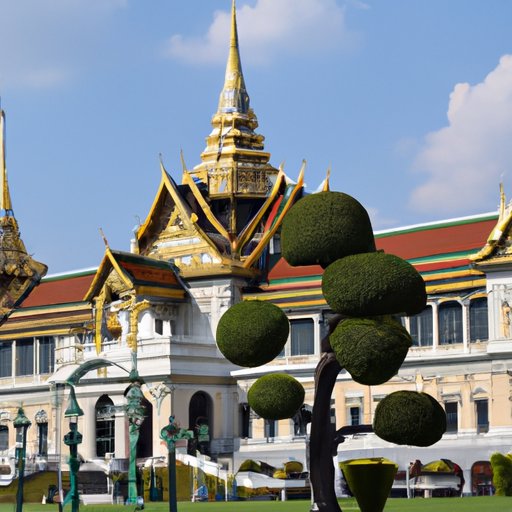
I. Introduction
The British Royal Family has always been a significant subject of intrigue all around the world, not just because of its illustrious history, but also because of the numerous tourist attractions associated with it. It is an essential part of British culture and a huge magnet for the country’s tourism industry.
Visitors from around the world flock to Britain to witness the grandeur of the Royal Family’s magnificent palaces, castles, and cathedrals. These landmarks exemplify the country’s rich history and culture, making their destinations a significant priority for tourists.
II. The Different Sites Associated with the Royal Family and How They Attract Tourists
The Royal Family’s tourist attractions are diverse, ranging from the palaces of London, the historical castles, and the grand cathedrals dotted all over the country. These attractions play a fundamental role in bringing visitors to the UK from all over the world.
Visitors are mesmerized by the many different experiences they can have while visiting these different sites. From changing of the guard ceremonies at Buckingham Palace to exploring the depths of the Tower of London’s historic secrets, these landmarks are a huge draw for tourists.
Each of the sites has its unique character and charm. For instance, Buckingham Palace highlights the monarchy’s formal splendor, while Windsor Castle is known for being one of the oldest and most famous castles in the world. Westminster Abbey has been the site of Royal coronations for almost a thousand years and remains a significant location for royal baptisms and funerals. With such historical significance, it’s not surprising that these attractions receive so much attention.
III. The Economic Impact on Local Businesses
The economic benefits of tourism associated with the Royal family extend well beyond the walls of these historical landmarks. The presence of such a rich historical and cultural heritage only contributes to the growth of local businesses.
New souvenir shops and eateries open every day at these sites, and tourism-related businesses in the surrounding areas see noticeable growth. These small businesses benefit from increased tourism, which has been attributed to the popularity of these Royal sites.
IV. Analysis of Statistics related to the Number of Tourists Visiting Royal Sites
The Royal Family’s economic impact on tourism can be measured through the number of visitors that visit these sites. The available data shows that the number of visitors interested in historical sites has been continuously increasing in the past few years.
According to official statistics, more than 45 million people visited England in 2018. A large percentage of these tourists visited sites like the Palace of Westminster and Hampton Court Palace. This trend shows that historical tourism is becoming increasingly popular, with Royal sites remaining prime destinations.
V. The Different Factors Affecting the Amount of Money Tourists Spend
Factors such as location, activities, and attractions all contribute to the amount of money tourists spend while visiting the UK. The closer they are to Royal sites, the more money tourists are likely to spend.
The intricacy of activities and attractions also significantly influences how much tourists are willing to spend. From sightseeing tours to dining at Michelin-starred restaurants, there is something for everyone when it comes to Royal-themed activities. At events such as the Changing of the Guard, visitors can get up close and personal with the British Royal Family, which attracts huge crowds and tickets easily fetch up to £125.
Other factors that influence the amount of money spent include cultural events, festivals, and exhibitions. Tourists are always eager to engage and interact with the different aspects of British culture, and the Royal family offers a glimpse into the country’s rich history and heritage.
VI. Explanation of How the Royal Family Generates Income through Licensed Merchandise and Souvenirs
Merchandise that is licensed by the royal family is a highly profitable business, and tourists around the world are always eager to buy unique souvenirs to remind them of their trip.
From Royal-inspired jewelry to the British flag-themed memorabilia, there is no end to the creativity of licensed merchandise. The quality and exclusivity of these products encourage tourists to buy more, and the profit generated from the sales goes back into the Royal Family’s treasury.
VII. Conclusion
The Royal Family offers a historical and cultural experience that is distinct to the UK, and combined with the English tourism industry and small local businesses, the Royal Family brings billions of pounds to the British economy annually. As long as the Royal Family remains a fundamental part of the country’s identity, it will continue to be a vital element of British tourism.
There is no doubt that their influence on tourism will only increase, and visitors continue to flock to the UK’s Royal-associated landmarks. As visitors spend more and seek to delve deeper into the historical and cultural traditions of British life, there will always be room for the Royal Family in the country’s tourism industry.




